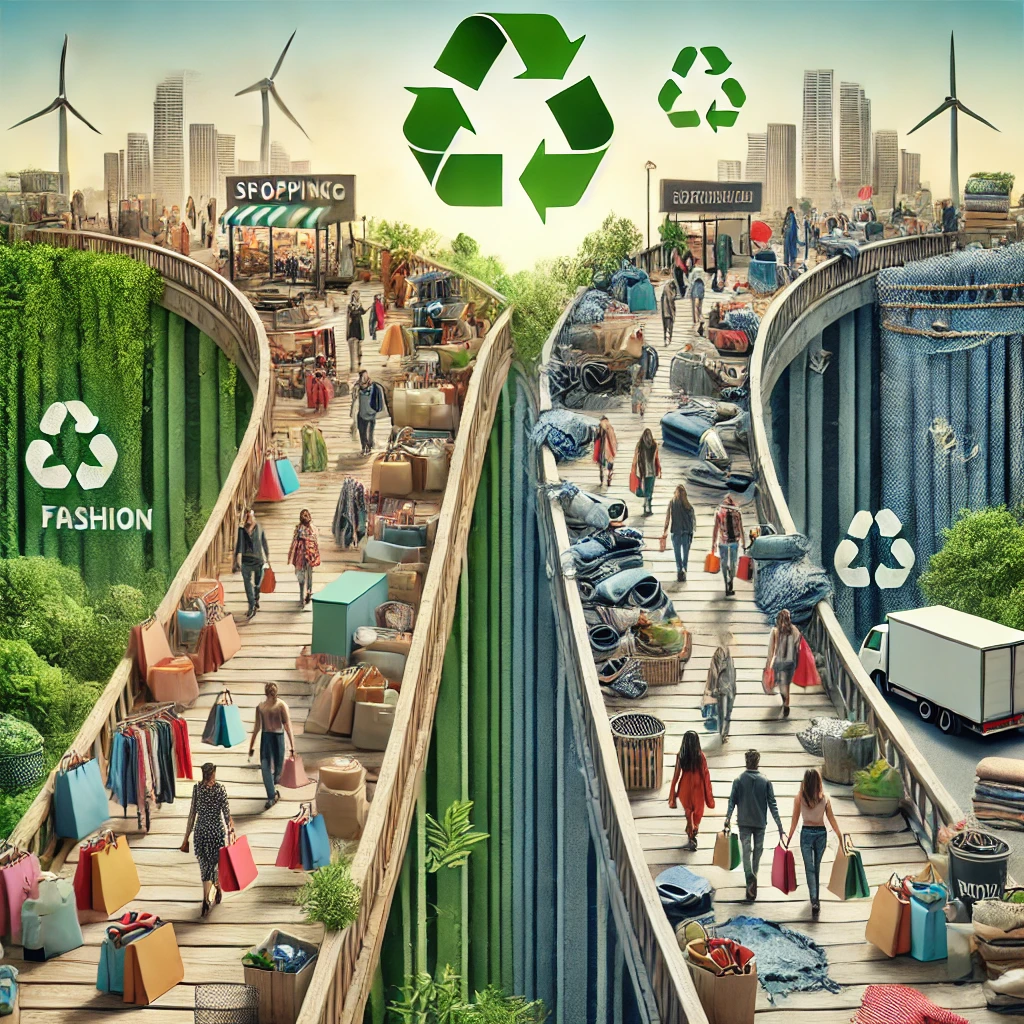The rapid advancement of technology, coupled with the consumerist culture of constantly seeking the latest gadgets, has given rise to an alarming issue – the “Fast Tech” crisis. Much akin to the problem of “Fast Fashion”, the “Fast Tech” phenomenon is contributing to a mountain of electronic waste (E-waste) that presents a colossal challenge for waste management and environmental sustainability. As Christmas approaches, it’s high time we scrutinise our purchasing decisions and ponder over the environmental repercussions of our tech consumption patterns.
Exploring the Depths of the Fast Tech Crisis
The ever-accelerating pace of tech innovation has turned electronic devices into transient commodities that are discarded as soon as a shiny new version hits the market. This cycle of rapid consumption and disposal has led to a startling surge in E-waste.
The Alarming Scale of E-Waste
The scale of the E-waste problem is enormous. According to the not-for-profit organisation Material Focus, in the UK alone, half a billion small electrical items, ranging from headphones to mini fans, were discarded in a single year. The research points out that the UK’s E-waste stream is expanding at an alarming rate, with over 471 million items discarded in the past year1.
The Hidden Value within E-Waste
While the sheer volume of E-waste is a concern, an often-overlooked aspect is the loss of valuable materials that these discarded items contain. Many of the small electronic devices that we mindlessly toss into the bin are laden with precious materials such as copper, lithium, and stainless steel1. If properly recycled, these materials could find a second life in wind turbines, medical devices, and electric vehicles2.
The Tip of the Iceberg: The Larger E-Waste Problem
While the “Fast Tech” crisis constitutes a significant chunk of the E-waste problem, it’s just the tip of the iceberg. The issue of wasted electricals extends far beyond small everyday gadgets and permeates all levels of electronic consumption.
The Staggering Volume of Unused Electronics
The scale of unused electronics in our homes is astounding. In the UK, there are an estimated 880 million electrical items of all kinds lying unused in homes2. This hoarding of unused electronics not only occupies precious space but also represents a wealth of resources that could be reused or recycled.
The Annual E-Waste Production
When it comes to the annual production of E-waste, the figures are even more staggering. Over 100,000 tonnes of waste electricals are disposed of every year in the UK1. Globally, this figure skyrockets to a whopping 50 million tonnes3.
These statistics underscore the urgency of tackling the E-waste issue. It’s crucial to shift our focus from the linear economy of ‘take-make-dispose’ to a circular economy that emphasises durability, reusability, repairability, and recyclability.
The Circular Economy: A Sustainable Solution to E-Waste
The circular economy offers a promising solution to the E-waste problem. Instead of products being designed for a one-way journey from production to disposal, the circular economy envisages products and materials continuing in a loop of use and reuse.
The Benefits of a Circular Economy
A circular economy can significantly mitigate the environmental impacts of E-waste. For instance, a study published in Science found that adopting circular economy practices across the supply chain can reduce plastic use by almost 80% in the next 20 years3.
The Barriers to a Circular Economy
While the benefits of a circular economy are clear, transitioning from a linear to a circular economy is not without its challenges. Sustainable processes and materials typically cost more, and operational changes can be complex to implement3. Product design is another barrier, with many tech companies needing to rethink their design processes to align with the principles of a circular economy.
Tech Titans Taking Steps Towards a Circular Economy
Despite these challenges, some tech giants are making strides towards a more circular economy. Lenovo, a global technology company, is one such example. The brand has committed to using post-consumer recycled (PCC) materials in 100% of its PC products, 90% of its PC plastic packaging, and 60% of its smartphone packaging by the financial year 2025-263.
The company is also using more sustainable materials such as bamboo and sugar cane in its product packaging. Further, Lenovo has innovated a more sustainable shipping method for its servers that reduces the consumption of packaging materials3.
Upstream Innovation: The Key to a Circular Economy
Upstream innovation, or addressing the root cause of a problem to prevent it from occurring, is central to the circular economy concept. The tech industry is increasingly recognising the need for materials that can be recycled upstream3.
Lenovo, for instance, focuses on integrating closed-loop recycled content (plastics from discarded electronics) to maximise the amount of recycled plastic that can be integrated into its products3. Such upstream innovation not only reduces waste but also presents commercial opportunities for companies, as consumers increasingly favour brands that offer sustainable solutions.
The Role of Technology in Tackling Food Waste: An Analogous Approach
Just as technology can contribute to the E-waste problem, it can also play a crucial role in solving it. The restaurant industry provides an interesting parallel, where tech solutions are being harnessed to combat food waste.
Restaurant Management Systems: A Tool to Reduce Waste
Restaurant Management Systems (RMSs) have emerged as powerful tools in the fight against food waste. By digitising invoices and integrating with Point of Sale (POS) systems, RMSs can track everything from the food entering the kitchen to the food being sold4.
Waste Logs: Keeping Tabs on Waste
One key feature of RMSs is the waste log, which records both raw and completed waste. This log tracks the type of waste, the time it occurred, and the staff member responsible4. By recording waste on a daily basis, RMSs help restaurants identify areas of concern and take corrective action.
AvT and Inventory Management: A Data-Driven Approach
Beyond waste logs, RMSs also provide valuable insights through Actual vs Theoretical (AvT) food cost variance data and inventory management4. These features enable restaurants to pinpoint issues, adjust their ordering patterns, and take steps to minimise waste.
Prediction and AI: The Future of Waste Management
Looking to the future, AI-based technologies hold the promise of further revolutionising waste management. With the potential to predict order amounts and even manage drone deliveries, these technologies are set to make running restaurants, and potentially managing E-waste, more efficient4.
Conclusion: The Path to a Sustainable Future
The “Fast Tech” crisis and the broader E-waste problem present a formidable challenge. As we approach Christmas, it’s crucial that we reflect on our consumption habits and consider the environmental impacts of our purchasing decisions.
By adopting a circular economy approach, tech companies can help mitigate the E-waste problem. Meanwhile, technological solutions like RMSs offer valuable lessons that could be applied to the management of E-waste.
Together, we can transition from a culture of “fast tech” and waste to a more sustainable approach to product design and technology innovation. The challenge is significant, but by taking personal action and demanding more from tech suppliers, we can contribute to a more sustainable future.
Footnotes
- The Guardian – More than 100,000 tonnes of waste electricals are thrown away every year ↩ ↩2 ↩3
- eeNews Europe – UK saw 471m items of ‘FastTech’ e-waste in 2022 ↩ ↩2
- Lenovo StoryHub – The Path to a Brighter, More Sustainable Future ↩ ↩2 ↩3 ↩4 ↩5 ↩6 ↩7
- MarginEdge – How Technology is Reshaping the Fight Against Food Waste in Restaurants ↩ ↩2 ↩3 ↩4




